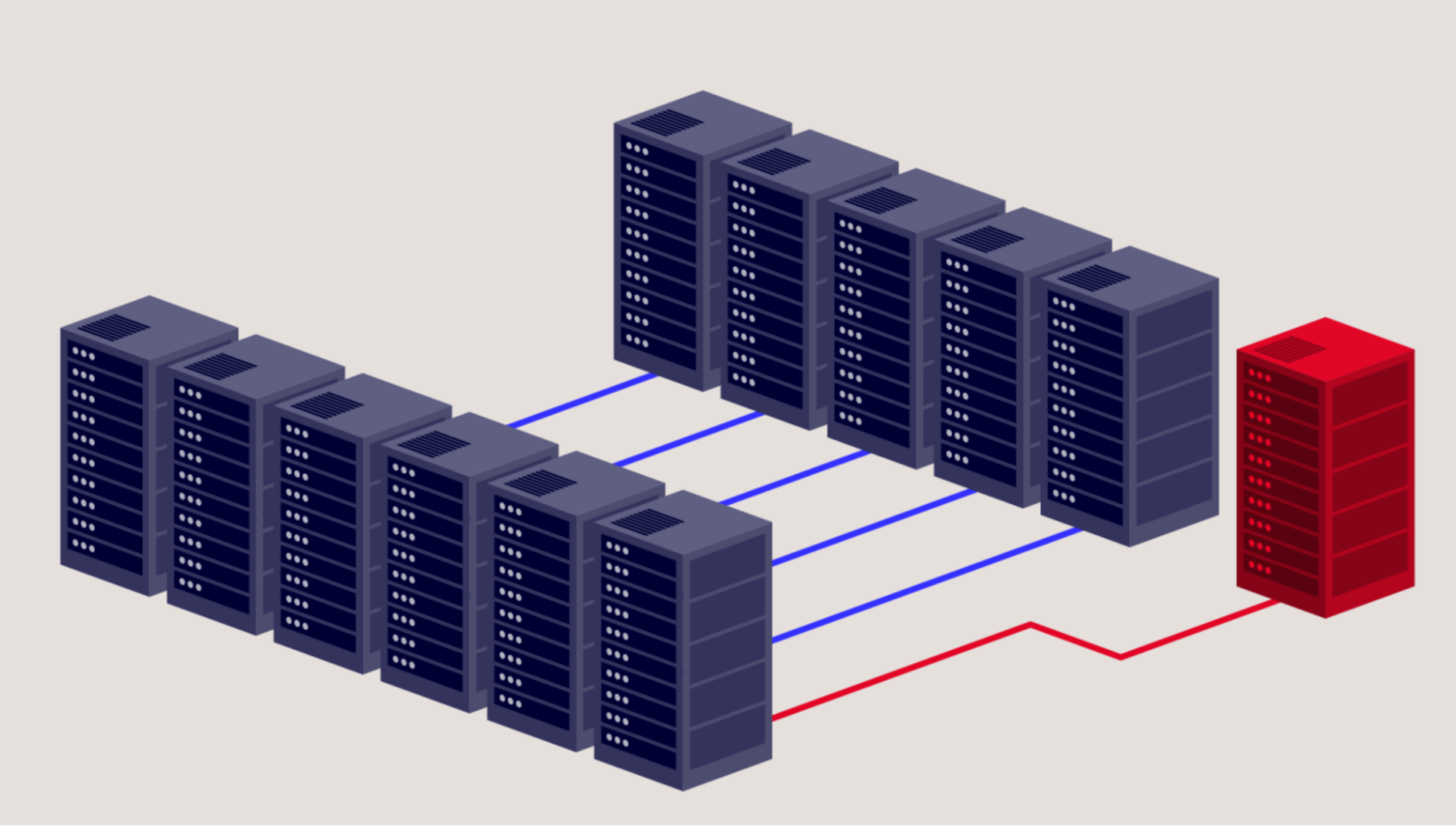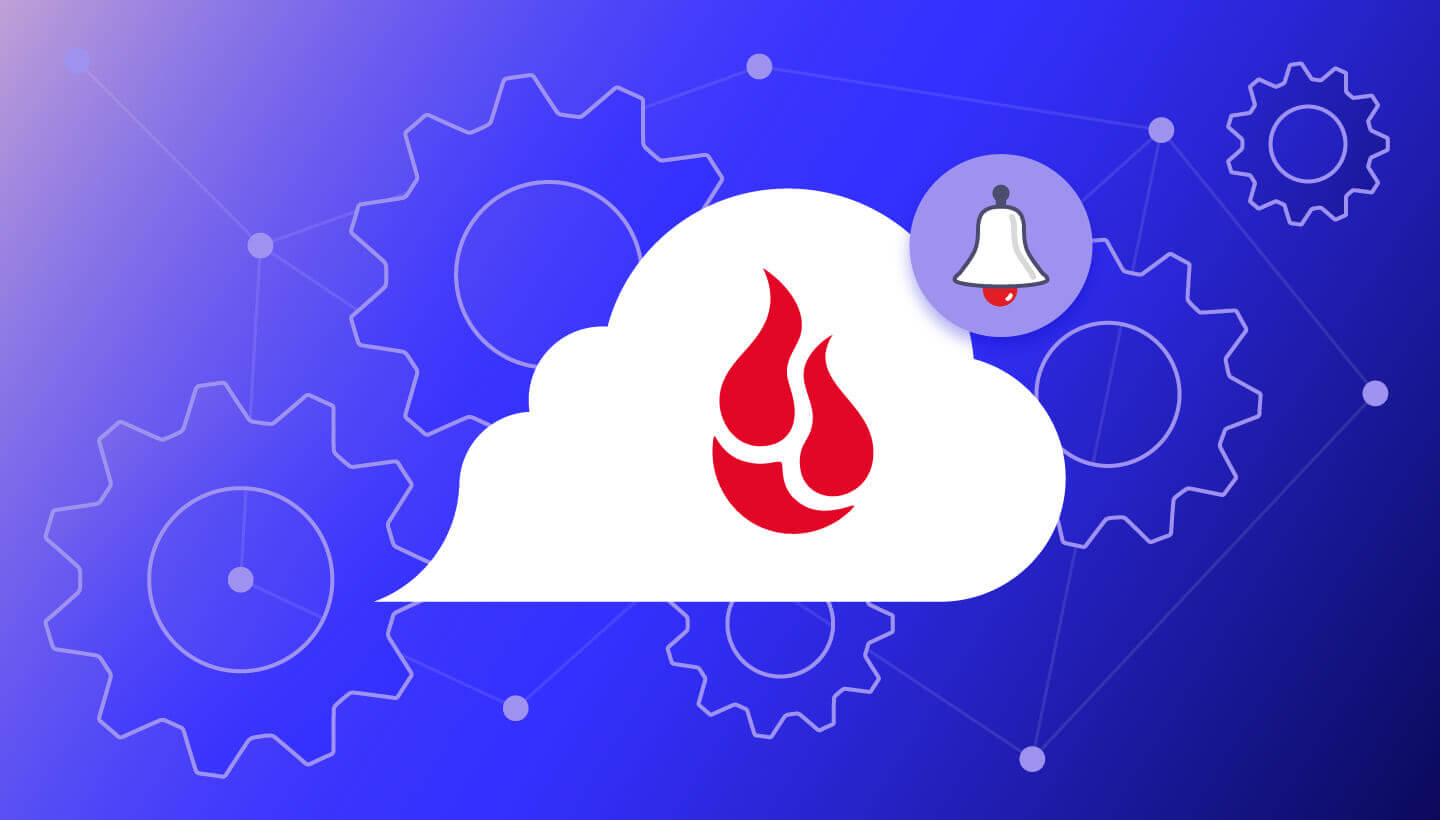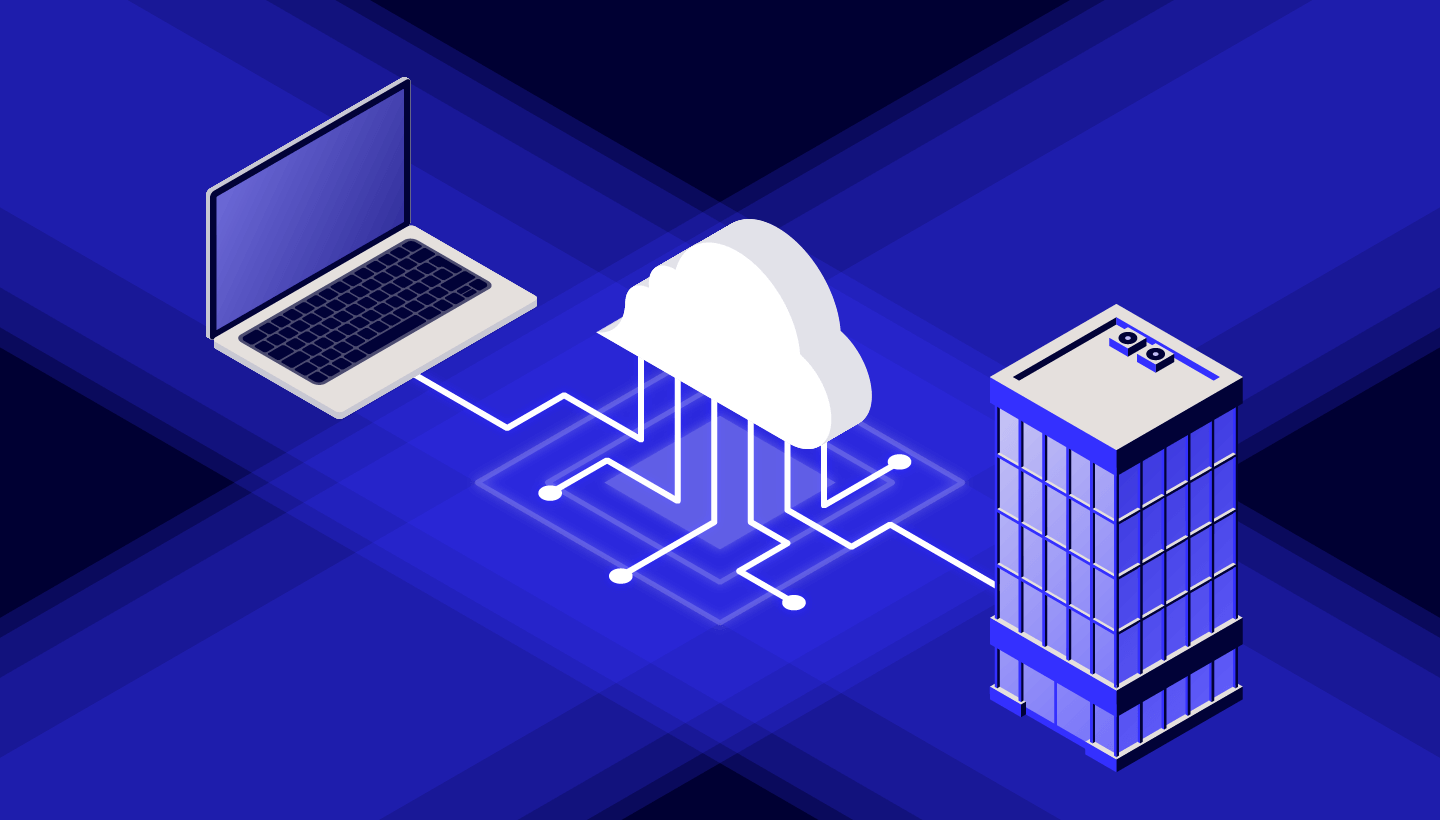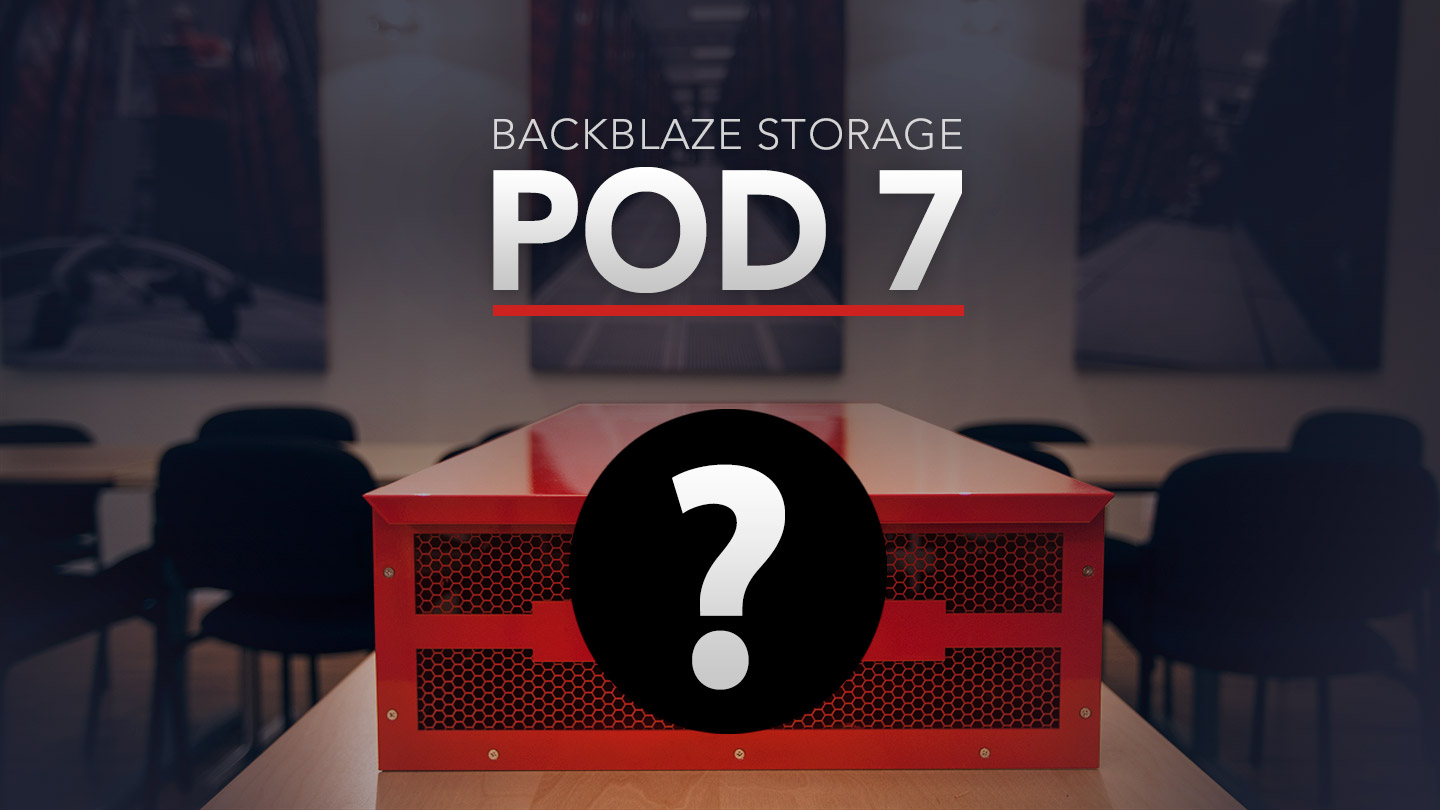
In September of 2019, we celebrated the 10-year anniversary of open-sourcing the design of our beloved Storage Pods. In that post, we contemplated the next generation Backblaze Storage Pod and outlined some of the criteria we’d be considering as we moved forward with Storage Pod 7.0 or perhaps a third-party vendor.
Since that time, the supply chain for the commodity parts we use continues to reinvent itself, the practice of just-in-time inventory is being questioned, the marketplace for high-density storage servers continues to mature, and the continuing cost effectiveness of scaling the manufacturing and assembly of Storage Pods has proved elusive. A lot has changed.
The Next Storage Pod
As we plan for the next 10 years of providing our customers with astonishingly easy to use cloud storage at a fair price, we need to consider all of these points and more. Follow along as we step through our thought process and let you know what we’re thinking—after all, it’s your data we are storing, and you have every right to know how we plan to do it.
Storage Pod Realities
You just have to look at the bill of materials for Storage Pod 6.0 to know that we use commercially available parts wherever possible. Each Storage Pod has 25 different parts from 15 different manufacturers/vendors, plus the red chassis, and, of course, the hard drives. That’s a trivial number of parts and vendors for a hardware company, but stating the obvious, Backblaze is a software company.
Still, each month we currently build 60 or so new Storage Pods. So, each month we’d need 60 CPUs, 720 SATA cables, 120 power supplies, and so on. Depending on the part, we could order it online or from a distributor or directly from the manufacturer. Even before COVID-19 we found ourselves dealing with parts that would stock out or be discontinued. For example, since Storage Pod 6.0 was introduced, we’ve had three different power supply models be discontinued.
For most of the parts, we actively try to qualify multiple vendors/models whenever we can. But this can lead to building Storage Pods that have different performance characteristics (e.g. different CPUs, different motherboards, and even different hard drives). When you arrange 20 Storage Pods into a Backblaze Vault, you’d like to have 20 systems that are the same to optimize performance. For standard parts like screws, you can typically find multiple sources, but for a unique part like the chassis, you have to arrange an alternate manufacturer.
With COVID-19, the supply chain was very hard to navigate to procure the various components of a Storage Pod. It was normal for purchase orders to be cancelled, items to stock out, shipping dates to slip, and even prices to be renegotiated on the fly. Our procurement team was on top of this from the beginning, and we got the parts we needed. Still, it was a challenge as many sources were limiting capacity and shipping nearly everything they had to their larger customers like Dell and Supermicro, who were first in line.
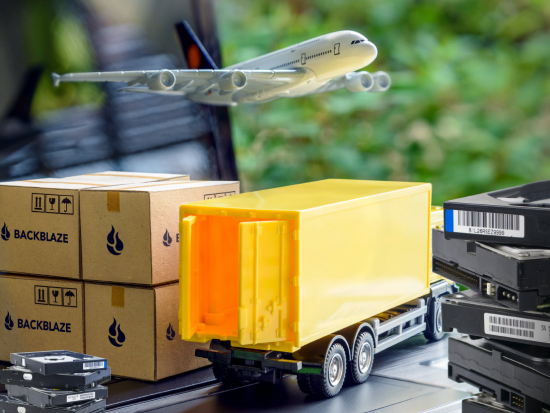
Getting Storage Pods Built
When we first introduced Storage Pods, we were the only ones who built them. We would have the chassis constructed and painted, then we’d order all the parts and assemble the units at our data center. We built the first 20 or so this way. At that point, we decided to outsource the assembly process to a contract manufacturer. They would have a sheet metal fabricator construct and paint the chassis, and the contract manufacturer would order and install all the parts. The complete Storage Pod was then shipped to us for testing.
Over the course of the last 12 years, we’ve had multiple contract manufacturers. Why? There are several reasons, but they start with the fact that building 20, 40, or even 60 Storage Pods a month is not a lot of work for most contract manufacturers—perhaps five days a month at most. If they dedicate a line to Storage Pods, that’s a lot of dead time for the line. Yet, Storage Pod assembly doesn’t lend itself to being flexed into a line very well, as the Storage Pods are bulky and the assembly process is fairly linear versus modular.

In addition, we asked the contract manufacturers to acquire and manage the Storage Pod parts. For a five-day-a-month project, their preferred process is to have enough parts on hand for each monthly run. But we liked to buy in bulk to lower our cost, and some parts like backplanes had high minimum order quantities. This meant someone had to hold inventory. Over time, we took on more and more of this process, until we were ordering all the parts and having them shipped to the contract manufacturer monthly to be assembled. It didn’t end there.
As noted above, when the COVID-19 lockdown started, supply chain and assembly processes were hard to navigate. As a consequence, we started directing some of the fabricated Storage Pod chassis to be sent to us for assembly and testing. This hybrid assembly model got us back in the game of assembling Storage Pods—we had gone full circle. Yes, we are control freaks when it comes to our Storage Pods. That was a good thing when we were the only game in town, but a lot has changed.
The Marketplace Catches Up
As we pointed out in the 10-year anniversary Storage Pod post, there are plenty of other companies that are making high-density storage servers like our Storage Pod. At the time of that post, the per unit cost was still too high. That’s changed, and today high-density storage servers are generally cost competitive. But unit cost is only part of the picture as some of the manufacturers love to bundle services into the final storage server you receive. Some services are expected, like maintenance coverage, while others—like the requirement to only buy hard drives from them at a substantial markup—are non-starters. Still, over the next 10 years, we need to ensure we have the ability to scale our data centers worldwide and to be able to maintain the systems within. At the same time, we need to ensure that the systems are operational and available to meet or exceed our expectations and those of our customers, as well.
The Amsterdam Data Center
As we contemplated opening our data center in Amsterdam, we had a choice to make: use Storage Pods or use storage servers from another vendor. We considered shipping the 150-pound Storage Pods to Amsterdam or building them there as options. Both were possible, but each had their own huge set of financial and logistical hurdles along the way. The most straightforward path to get storage servers to the Amsterdam data center turned out to be Dell.
The process started by testing out multiple storage server vendors in our Phoenix data center. There is an entire testing process we have in place, which we’ll cover in another post, but we can summarize by saying the winning platform needed to be at least as performant and stable as our Storage Pods. Dell was the winner and from there we ordered two Backblaze Vaults worth of Dell servers for the Amsterdam data center.
The servers were installed, our data center techs were trained, repair metrics were established and tracked, and the systems went live. Since that time, we added another six Backblaze Vaults worth of servers. Overall, it has been a positive experience for everyone involved—not perfect, but filled with learnings we can apply going forward.
By the way, Dell was kind enough to make red Backblaze bezels for us, which we install on each of the quasi-Storage Pods. They charge us extra for them, of course, but some things are just worth it.
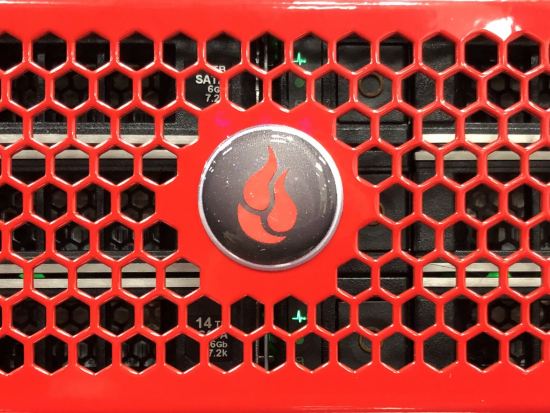
Lessons Learned
The past couple of years, including COVID, have taught us a number of lessons we can take forward:
- We can use third-party storage servers to reliably deliver our cloud storage services to our customers.
- We don’t have to do everything. We can work with those vendors to ensure the equipment is maintained and serviced in a timely manner.
- We deepened our appreciation of having multiple sources/vendors for the hardware we use.
- We can use multiple third-party vendors to scale quickly, even if storage demand temporarily outpaces our forecasts.
Those points, taken together, have opened the door to using storage servers from multiple vendors. When we built our own Storage Pods, we achieved our cost savings from innovation and the use of commodity parts. We were competing against ourselves to lower costs. By moving forward with non-Backblaze storage servers, we will have the opportunity for the marketplace to compete for our business.
Are Storage Pods Dead?
Right after we introduced Storage Pod 1.0 to the world, we had to make a decision as to whether or not to make and sell Storage Pods in addition to our cloud-based services. We did make and sell a few Storage Pods—we needed the money—but we eventually chose software. We also decided to make our software hardware-agnostic. We could run on any reasonably standard storage server, so now that storage server vendors are delivering cost-competitive systems, we can use them with little worry.
So the question is: Will there ever be a Storage Pod 7.0 and beyond? We want to say yes. We’re still control freaks at heart, meaning we’ll want to make sure we can make our own storage servers so we are not at the mercy of “Big Server Inc.” In addition, we do see ourselves continuing to invest in the platform so we can take advantage of and potentially create new, yet practical ideas in the space (Storage Pod X anyone?). So, no, we don’t think Storage Pods are dead, they’ll just have a diverse group of storage server friends to work with.
Storage Pod Fun
Over the years we had some fun with our Storage Pods. Here are a few of our favorites.
Storage Pod Dominos: That’s all that needs to be said.
Building the Big “B”: How to build a “B” out of Storage Pods.
Crushing Storage Pods: Megabot meets Storage Pod, destruction ensues.
Storage Pod Museum: We saved all the various versions of Storage Pods.
Storage Pod Giveaway: Interviews from the day we gave away 200 Storage Pods.
Pick a Faceplate: We held a contest to let our readers choose the next Backblaze faceplate design.
